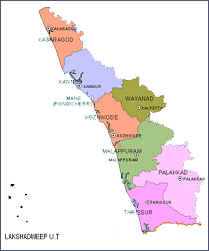The
Roman-Persian Wars were a series of conflicts between the
Greco-Roman world and two successive dynasties of the
Persian Empire that began as a war between the late
Roman Republic and the
Parthian Empire in
92 BC before being carried over to the
Roman Empire and
Sassanid Persia. The long running contest finally ending as a conflict between the
Byzantine Empire and the
Sassanid Dynasty in
627 AD.
 Origins
Origins The first military confrontation came in 66/65 BC, during
Pompey's campaign in
Armenia, when he rejected a Parthian proposal to establish the frontier between the two empires on the Euphrates. The Parthians occupied
Corduene, until then part of Armenia, but were expelled by the Romans. More serious warfare began in
53 BC, when
Crassus led an invasion of Mesopotamia, with catastrophic results. At the
Battle of Carrhae, Crassus was defeated by the Parthians under the
Surena. Crassus was killed, his command mostly annihilated, and the rest captured resulting in the worst Roman defeat since the
Battle of Cannae. The Parthians retaliated the following year with raids into Syria, and in
51 BC mounted a major invasion led by the crown prince
Pacorus and the general
Osaces, but their army was decisively defeated near Antioch by the Romans under
Cassius and Osaces was killed. During
Caesar's civil war the Parthians briefly intervened in Syria in support of the opponents of
Julius Caesar, relieving the besieged Pompeian garrison of
Apamea before withdrawing. WIth the civil war over, Caesar planned Eastern operations larger in scope than Crassus, but was assassinated before his plans could come to fruition. During the ensuing
Liberators' civil war, the Parthians actively supported
Brutus and Cassius, sending a contingent which fought with them at the
Battle of Philippi in
42 BC. After that defeat, the Parthians under Pacorus invaded Roman territory in
40 BC in conjunction with
Quintus Labienus, a Roman erstwhile supporter of Brutus and Cassius. They swiftly overran Syria, where most of the cities welcomed them. Pacorus then advanced into
Judaea, overthrowing the Roman client
Hyrcanus II and installing his nephew
Antigonus in his place. Meanwhile Labienus had invaded
Anatolia, but he was driven back to Syria by Roman forces under
Ventidius; reinforced by the Parthians, Labienus was nevertheless defeated and killed. After suffering a further defeat near the
Syrian Gates, the Parthians withdrew from Syria. They returned in
38 BC, but were decisively defeated by Ventidius and Pacorus was killed. With Roman control of Syria and Judaea restored,
Mark Antony led a huge army into
Azerbaijan but failed to make progress and the Romans withdrew with heavy casualties.
Roman Republic vs Parthia After Antony's campaign, peace between the empires was largely uninterrupted until
59 AD, when the Romans invaded Armenia after the Parthian king
Vologases I forcibly installed his brother
Tiridates on the throne there. Roman forces under
Corbulo overthrew Tiridates and replaced him with a
Cappadocian prince. This prompted Parthian retaliation and an inconclusive series of campaigns in Armenia ensued. The war came to an end in
64 when the Romans agreed to allow Tiridates and his descendants to rule Armenia on condition that they received the kingship from the Roman emperor. A new series of wars began in the second century AD, during which the Romans consistently held the upper hand over Parthia. In
114 the Roman Emperor
Trajan invaded Armenia and annexed it as a Roman province. In
115 he ovverran northern Mesopotamia and in
116 he captured the Parthian capital
Ctesiphon before sailing downriver to the
Persian Gulf. However, in that year revolts erupted in the occupied territory, while a major
Jewish revolt broke out in Roman territory, severely stretching Roman military resources. Trajan subdued the rebels in Mesopotamia, but having installed the Parthian prince
Parthamaspates on the throne there as a client ruler he withdrew his armies, and his remaining conquests were abandoned by his successor
Hadrian. In
161 another war broke out over Armenia;
Vologases IV of Parthia defeated the Romans there and ravaged Syria. In
163 a Roman counter-attack under
Statius Priscus installed a favoured candidate on the throne of Armenia, and in
164 Avidius Cassius began an invasion of Mesopotamia, sacking
Seleucia and Ctesiphon in the following year. An epidemic, possibly of smallpox, which was sweeping Parthia at the time now spread to the Roman army, leading to their withdrawal. In
195 another Roman invasion of Mesopotamia began under the Emperor
Septimius Severus, who returned and sacked Ctesiphon yet again in
197. These wars led to the Roman acquisition of northern Mesopotamia, as far as the areas around
Nisibis and
Singara. A final war against the Parthians was launched by the Emperor
Caracalla, who sacked
Arbela in
216, but after his assassination his successor
Macrinus was defeated by the Parthians near Nisibis and was obliged to make a payment in exchange for peace.
Roman Empire vs Parthia When the Parthian Empire was overthrown, there was no reduction in the conflict since the Sassanids were even more aggressive and stronger than their predecessors due to their more centralized state. Conflict with Rome began shortly after the foundation of the
Sassanid Empire by
Ardashir I (226–241), who raided in
Mesopotamia and
Syria in
230. A Roman counter-offensive in 230 under
Alexander Severus (222–235) met with mixed fortunes, winning a number of engagements in north-western
Iran while another army was defeated on the
Euphrates. The struggle resumed and intensified under Ardashir's successor
Shapur I (241–272). He invaded Mesopotamia but his forces were expelled from Roman territory after their defeat in the
Battle of Resaena in
243. Encouraged by this success, the Emperor
Gordian III advanced down the Euphrates but was defeated near
Ctesiphon in the
Battle of Misiche in
244. Responding to Roman incursions into Armenia, Shapur I resumed hostilities and defeated the Romans at the
Battle of Barbalissos in
253 allowing him to take and plunder
Antioch. In
259 he captured the Emperor
Valerian I after crushing his army in the
Battle of Edessa, but his subsequent advance into
Anatolia ended in defeat and the loss of all his territorial gains. In
283 the Emperor
Carus launched a successful invasion of Persia, sacking its capital,
Ctesiphon. In 296 the Persian Shah
Narseh defeated the Emperor
Galerius in Mesopotamia, but in 298 Galerius defeated Narseh in Armenia, capturing his harem and forcing the Persians to cede five provinces east of the Tigris. From
336 the Persians under
Shapur II mounted a series of offensives against the Romans under
Constantius II, with little lasting effect. After a period of truce in the 350s while Shapur repulsed nomad attacks on his Central Asian frontier, he launched a new campaign in
359 which was more successful and provoked a major offensive in
363 by the Roman Emperor
Julian. Despite victory in the
Battle of Ctesiphon, Julian was unable to take the Persian capital and he was killed the same year during a difficult retreat along the
Tigris. His successor
Jovian was forced to hand over
Nisibis,
Singara and the territories taken in 298 in exchange for safe passage for his army back to Roman territory. With both empires preoccupied by barbarian threats from the north, a largely peaceful period followed, interrupted only by two brief wars in 421-2 and
440.
Roman Empire vs Sassanid Empire When
Anastasius I refused
Kavadh I's demand for money to pay his debts to the
Hephthalites who had helped him regain his throne, Kavadh used this as a pretext for war. In
502 he quickly captured the unprepared city of
Theodosiopolis, but it was soon retaken by the Romans; Kavadh then besieged the fortress-city of
Amida through the autumn and winter. In early
503, Amida finally fell and the year saw much warfare without decisive results. The Romans attempted an ultimately unsuccessful siege of the Persian-held Amida while Kavadh laid siege to
Edessa with the same results. Finally in
504, the Romans gained the upper hand with the renewed
investment of Amida leading to the hand-over of the city. That year an armisitice was agreed as a result of an invasion of Armenia by the
Huns from the Caucasus. In late
506, a treaty was finally agreed, with the Romans paying subsidies to the Persians for the maintenance of fortifications in the Caucasus against the nomads who threatened the security of both empres. The Roman generals blamed many of their difficulties in this war on their lack of a major base in the immediate vicinity of the frontier, a role filled for the Persians by
Nisibis (which until its cession in 363 had served the same purpose for the Romans), and in
505 Anastasius therefore ordered the building of a great fortified city at
Dara. This was to become a key component of the Roman defences, and also a lasting source of controversy with the Persians, who complained that its construction violated earlier "arms limitation" pacts by which both empires had agreed not to establish new fortifications in the frontier zone.
Anastasian War Main article: Iberian War Iberian War The successful campaigns of
Belisarius in the west encouraged the Persians to return to war, both taking advantage of Roman preoccupation elsewhere and seeking to check the expansion of Roman territory and resources. In
539 the resumption of hostilities was foreshadowed by a Lakhmid raid led by
al-Mundhir IV, which was defeated by the Ghassanids under al-Harith ibn Jabalah. In
540, the Persians broke the Treaty Of Eternal Peace and
Khosrau II invaded Syria, destroying the great city of
Antioch and deporting its population to Persia; as he withdrew, he extorted large sums of money from the cities of Syria and Mesopotamia. Belisarius was quickly recalled by
Justinian I to the East to deal with the Persian threat, while the Goths in Italy, who were in touch with the Persian King, launched a counter-attack. Belisarius took the field and waged an inconclusive campaign against
Nisibis in 541. In the same year
Lazica switched its allegiance to Persia and Khosrau led an army to secure the kingdom. In 542 Khosrau launched another offensive in Mesopotamia, but soon withdrew in the face of an army under Belisarius, en route sacking the city of
Callinicum. Attacks on a number of Roman cities were repulsed and the Persian general Mihr-Mihroe was defeated and captured at Dara by John Troglita. Roman commanders then launched an offensive against
Dvin in Armenia, but were defeated by a small Persian force at Anglon. In 543 Khosrau besieged Edessa without success and was eventually bought off by the defenders. A five-year truce was agreed in 545, secured by Roman payments to the Persians.
Lazic War Main article: Roman-Persian War of 572-591 The climax The devastating impact of this last war, added to the cumulative effects of a century of almost continuous conflict, left both empires crippled. When Kavadh II died only months after coming to the throne, Persia was plunged into several years of dynastic turmoil and civil war. The Sassanids were further weakened by economic decline, heavy taxation from Khosrau II's campaigns, religious unrest, and the increasing power of the provincial landholders. The Roman Empire was even more severely affected, with its financial reserves exhausted by the war, the Balkans now largely in the hands of the Slavs, Anatolia devastated by repeated Persian invasions and the empire's hold on its recently regained territories in the Caucasus, Syria, Mesopotamia, Palestine and Egypt loosened by many years of Persian occupation. Neither empire was given any chance to recover, as within a few years they were struck by the onslaught of the
Arabs, newly united by
Islam. The Sassanid Empire rapidly succumbed to these attacks and was
completely destroyed. During the
Byzantine-Arab Wars, the exhausted Roman Empire's recently regained southern provinces were also lost during the
Muslim conquest of Syria,
Egypt and
North Africa, reducing the empire to a territorial rump consisting of Anatolia and a scatter of islands and footholds in the Balkans and
Italy. These remaining lands were thoroughly impoverished by frequent attacks, marking the transition from classical urban civilisation to a more rural, medieval form of society. However, unlike Persia the Roman Empire (in its medieval form usually termed the
Byzantine Empire) ultimately survived the Arab assault, holding onto its residual territories and decisively repulsing two
Arab sieges of its capital
Constantinople in
674-678 and
717-718.


 Biography
Biography

 Scholarly journals
Scholarly journals Origins
Origins Famous people from Ely
Famous people from Ely
 Former Players
Former Players